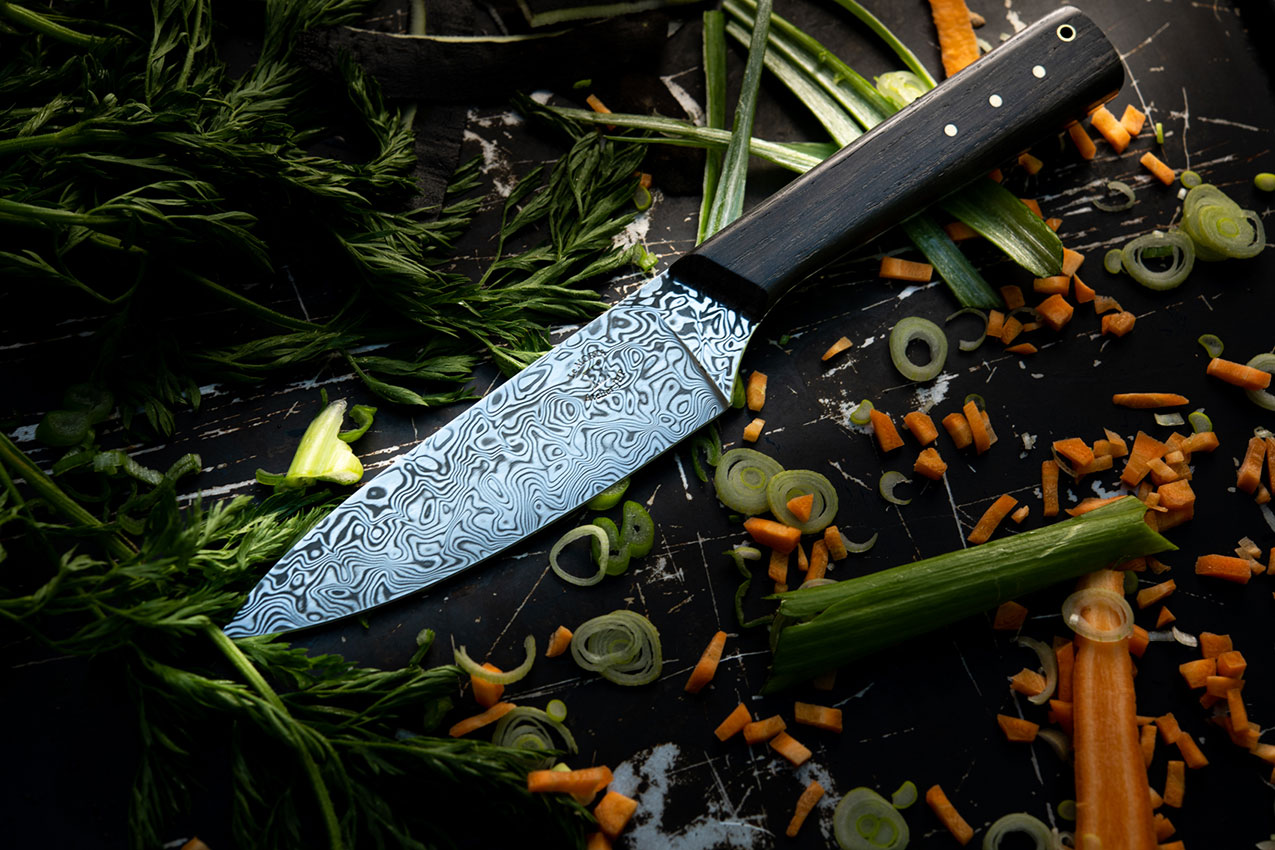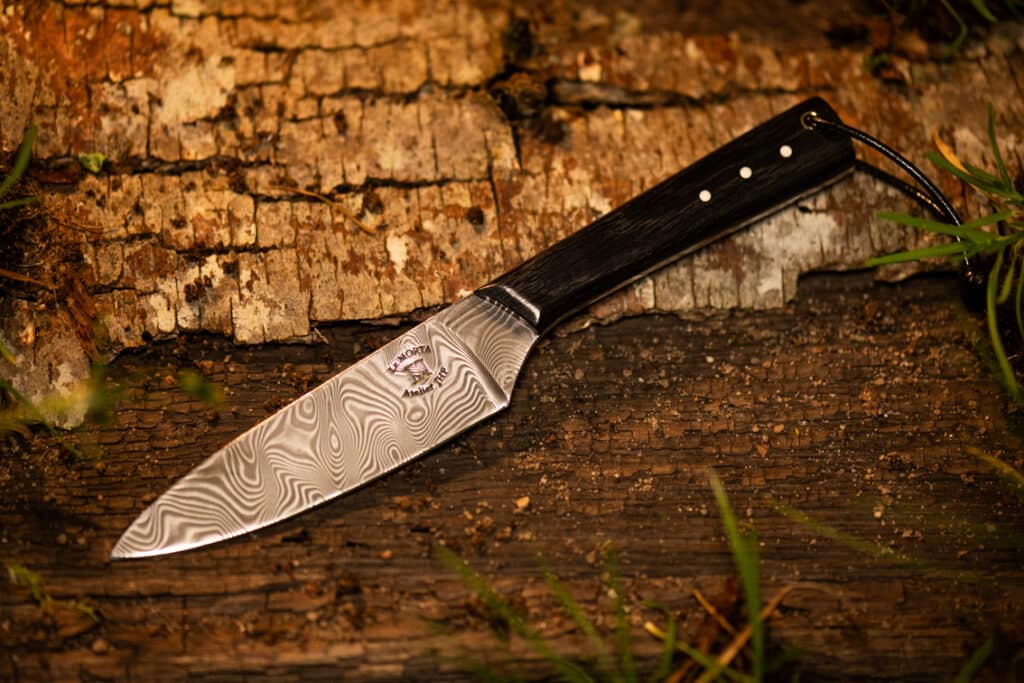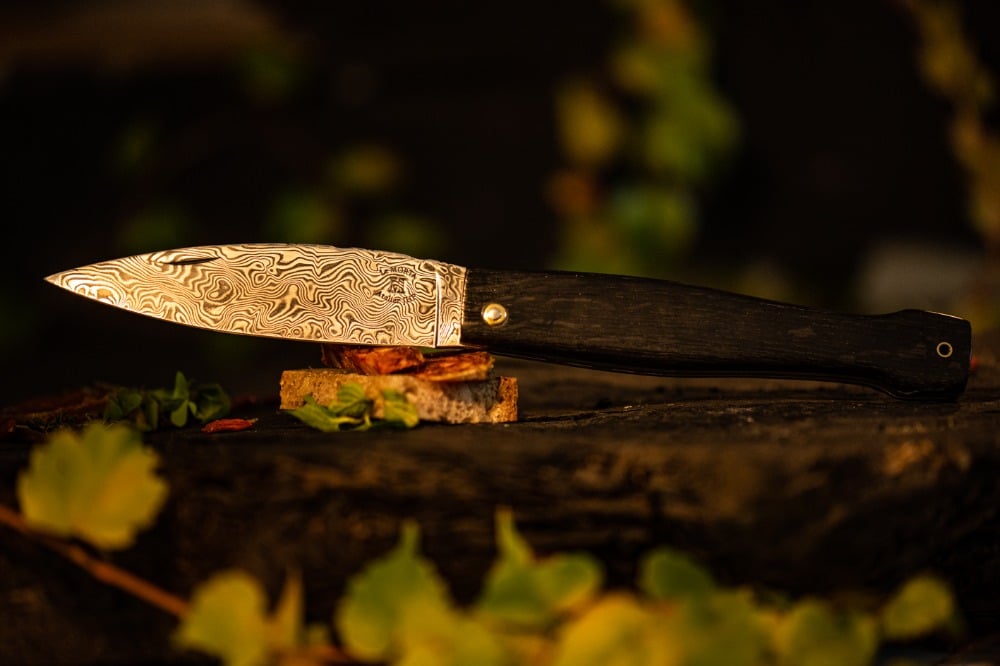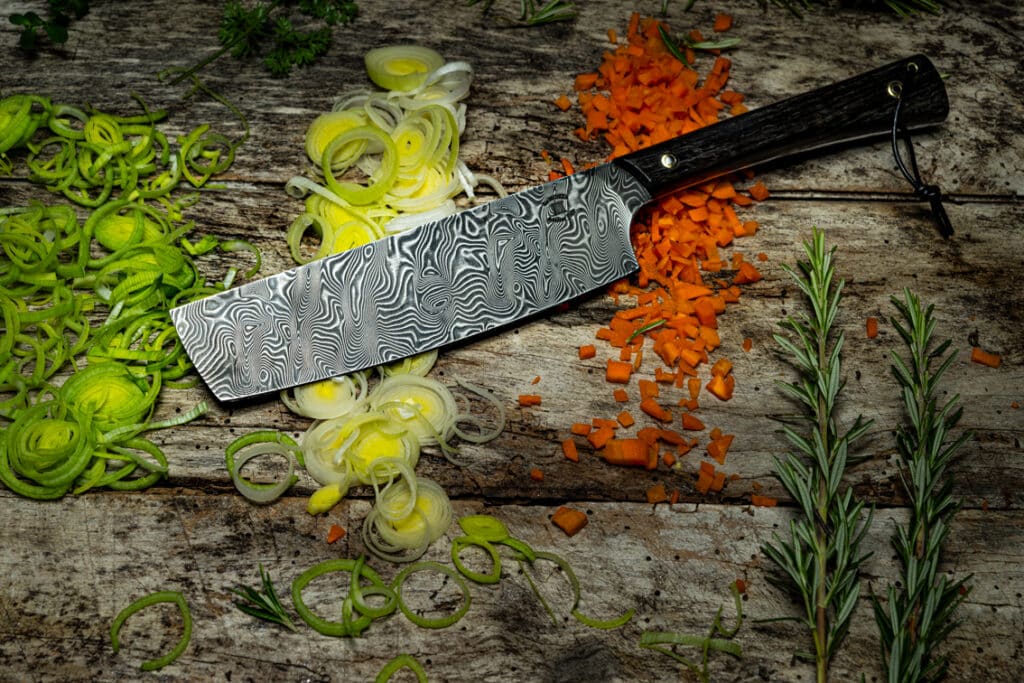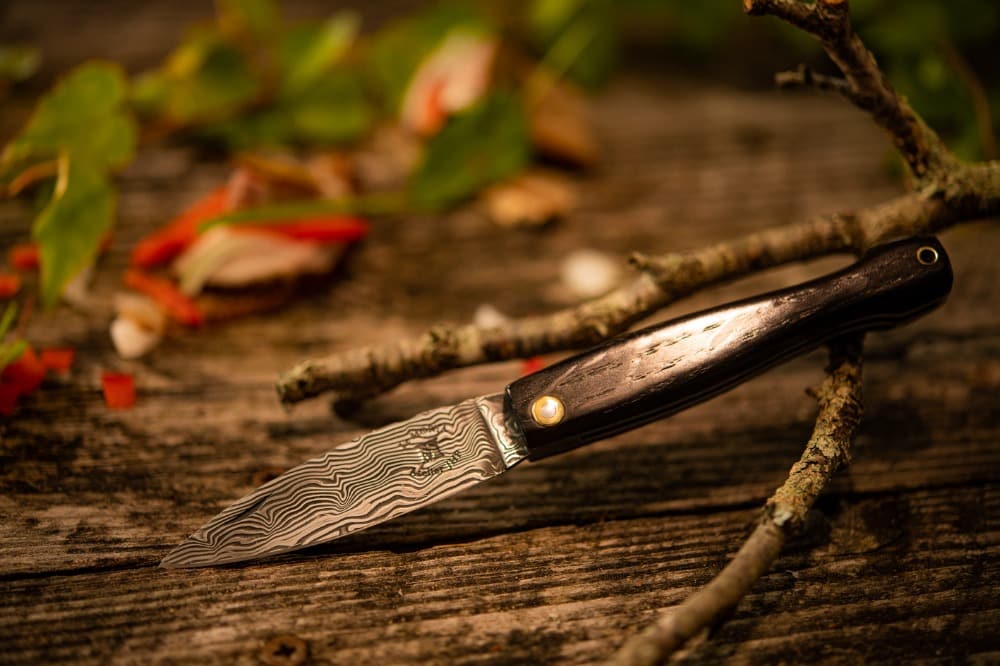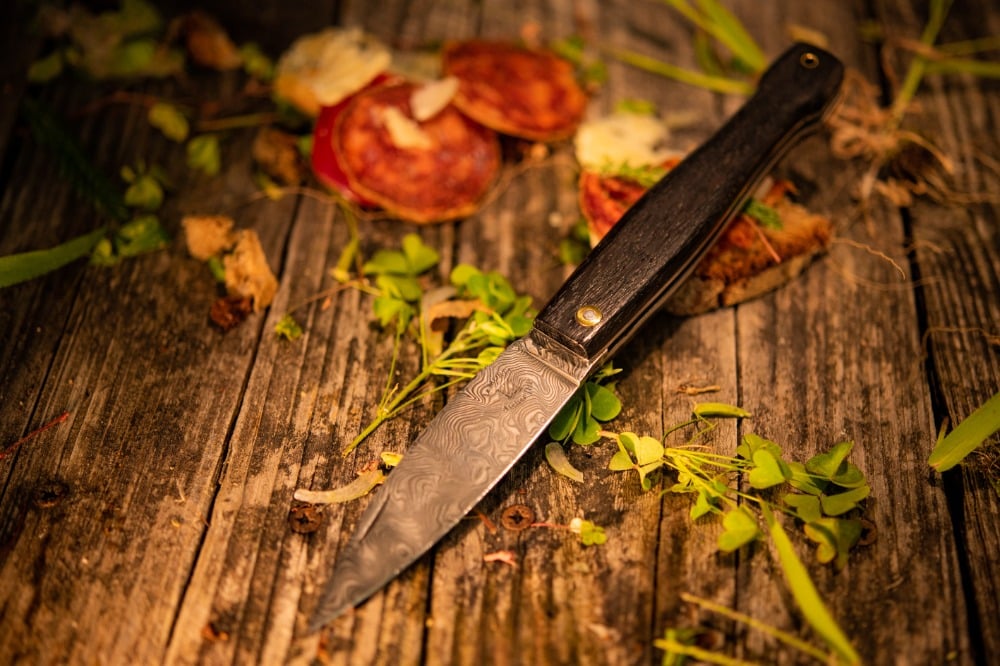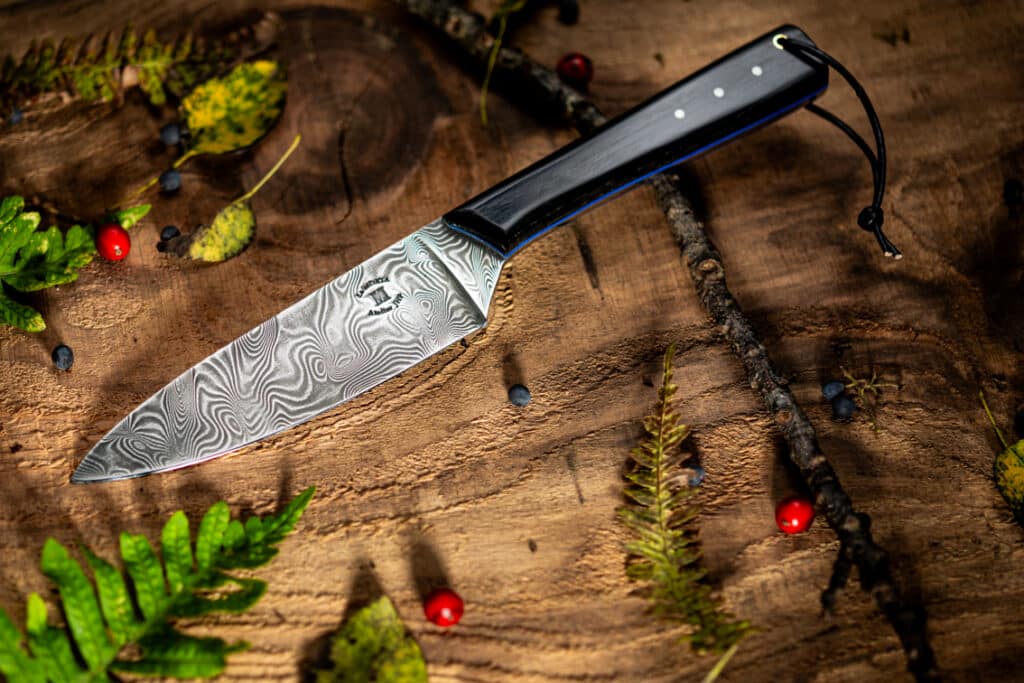Ever thought about creating your own Damascus knife, but unsure where to start? The intricacies of this ancient metalworking craft have fascinated blacksmiths and knifemakers for centuries.
In this straightforward guide, you’ll discover the step-by-step process of crafting a handmade Damascus blade – from selecting the perfect alloy composition to mastering pattern welding techniques.
What is damascus steel?
Damascus steel, a highly esteemed material in the world of bladesmithing, comes with an enticing variety. The name originates from Syria’s capital city where it was first produced, but today, different styles exist based on the methods used during production and their resulting patterns. Let’s discover them !
Crucible Steel
Crucible steel is a type of Damascus steel that has been highly sought after for centuries due to its exceptional strength and durability. This particular variation of Damascus steel is made by melting iron and carbon together in a sealed container called a crucible, hence the name.
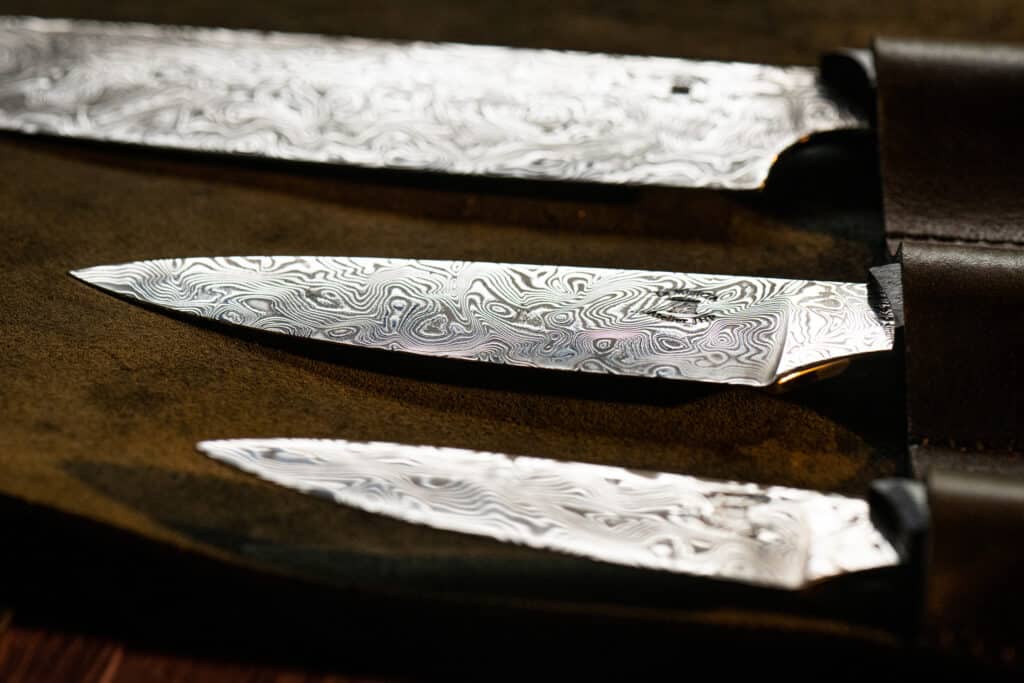
The mixture is then heated to extreme temperatures, allowing impurities to separate from the metal, resulting in a higher quality end product. Once cooled, the crucible steel can be forged into blades with distinct patterns that are both visually stunning and functional.
This ancient technique requires extensive knowledge and skill but produces knives that are revered for their sharpness and resilience.
Pattern-Welded Steel
This method involves layering and welding together different types of steel to create patterns on the blade.
The process starts by stacking alternating layers of high-carbon and low-carbon steels, which are then heated, hammered, and forge welded multiple times to create a solid billet. By manipulating the layers through twisting or folding, unique patterns emerge during each forging cycle.
Once the desired pattern is achieved, the billet is shaped into a blade and undergoes further heat treatment to enhance its hardness and flexibility. Pattern-welded steel allows artisans to showcase their creativity while also adding strength and visual appeal to Damascus knives.
Stainless Damascus Steel
Stainless Damascus Steel is a type of Damascus steel that combines the beauty and strength of traditional Damascus with the added benefit of corrosion resistance. Unlike traditional carbon-based Damascus, this stainless variation incorporates elements like chromium and nickel to prevent rusting and staining.
The process of making stainless Damascus involves using two or more types of stainless steels, layering them together, and then forging them into a solid billet. This billet is shaped into a blade, etched to reveal the intricate patterns characteristic of Damascus steel, and finished to create a sharp cutting edge.
Stainless Damascus Steel knives are highly prized for their durability, low maintenance requirements, and unique aesthetic appeal – making them popular among both professional chefs and knife enthusiasts alike.
What is the process of making a damascus knife?
To start the process of making a Damascus knife, you’ll need to gather the necessary tools and materials. The first and most important item you’ll need is high-quality steel. Look for steel with a good balance of hardness and toughness, such as 1084 or 15N20.
You’ll also need a forge to heat up the steel, along with a hammer and anvil for shaping and forging the blade.
In addition to these tools, you’ll want to have some safety equipment on hand. Safety goggles are crucial for protecting your eyes from sparks while working with the forge, and thick leather gloves will keep your hands safe when handling hot metal.
A vise or clamp will help secure your workpiece during shaping processes.
Lastly, don’t forget about consumables like grinding belts for refining the blade’s shape, sandpaper or emery cloth for polishing it, and etching solution (such as ferric chloride) to bring out those beautiful patterns in your finished blade.
Assembling the billets
To start the process of making a Damascus knife, assembling the billets is a crucial step. Billets are small bars or pieces of different types of steel that will be forged together to create the distinctive Damascus pattern.
These steel pieces can vary in size and shape, depending on your desired blade design. The key is to select steel with compatible compositions and characteristics that complement each other during forging and heat treatment.
By carefully arranging and stacking these billets, you set the foundation for creating a stunning Damascus pattern once they are heated, welded, and folded together through the subsequent steps in the knife-making process.
Heating and tempering the steel
To achieve the desired strength and durability, heating and tempering the steel is a crucial step in making a Damascus knife. Once the billets are assembled, they are heated to high temperatures to allow for proper fusing of the different layers.
This process also eliminates impurities and refines the structure of the steel. After heating, it’s time to temper the blade by slowly cooling it down. This helps relieve internal stresses and ensures that the knife retains its hardness while remaining less brittle.
The precise temperature and timing during both steps greatly influence the final quality of the blade, so careful attention must be paid throughout this critical phase of creating a Damascus knife.
Etching and finishing the blade
After the blade has been heat-treated and tempered, it is time to etch and finish the Damascus knife. Etching is an essential step to bring out the beautiful patterns in the steel.
To do this, a mild acid solution, such as ferric chloride or vinegar, is applied to the blade’s surface. The acid reacts with different layers of steel, creating contrast between them and highlighting the distinct pattern.
During this process, it’s crucial to monitor the etching carefully because leaving it too long can erode fine details. Once desired results are achieved, thoroughly rinse off the acid with water and neutralize any remaining residue.
Finishing involves honing and polishing your knife for both aesthetic appeal and functionality. This includes removing any burrs or imperfections on the edge by sharpening it using appropriate tools like whetstones or a sharpening system.
4 tips for making a damascus knife
1 – Choosing the right steel types
Different steels have varying properties and characteristics that can affect the final outcome of your blade.
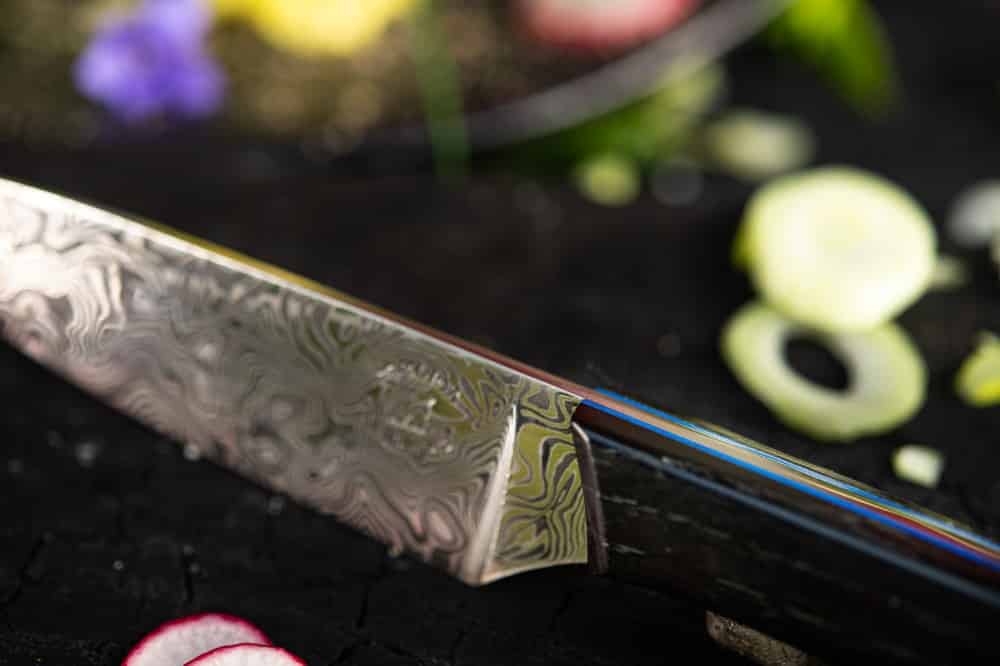
It’s important to consider factors like hardness, toughness, corrosion resistance, and ease of working with the steel during fabrication. Some common options for forging Damascus knives include high carbon steels like 1080 and 1095, as well as alloyed steels such as S30V or D2.
These steels offer excellent performance and are popular choices among knife makers. By carefully selecting the right steel types for your project, you can ensure that your Damascus knife turns out strong, durable, and capable of holding a sharp edge over time.
2 – Proper heat treatment techniques
To ensure the quality and durability of a Damascus knife, proper heat treatment techniques are crucial. This involves carefully heating the steel to specific temperatures and then cooling it rapidly or slowly to achieve the desired hardness and toughness.
The process may include steps such as normalization, quenching, tempering, and annealing. Each step has its own purpose in refining the steel’s molecular structure, enhancing its strength while minimizing brittleness.
3 – Designing the pattern
This process involves carefully selecting and arranging different types of steel to achieve the desired pattern.
Knifemakers can experiment with various combinations of steel, such as high carbon and low carbon or different grades of stainless steel, to create contrasting colors and textures.
The patterns can range from swirls and waves to bold lines and geometric shapes. By thoughtfully considering the design elements, including the size, placement, and orientation of each layer of steel, artisans can create beautiful patterns that enhance both the functionality and aesthetic appeal of their Damascus knives.
4 – Sharpening and polishing the blade
To achieve a sharp and polished blade, the final step in making a Damascus knife is sharpening and polishing. This process not only enhances the cutting performance but also brings out the beauty of the blade.
Using high-quality sharpening stones or sandpaper, you need to carefully grind the edge of your knife at an angle until it forms a razor-sharp edge. Start with coarser grits and work your way up to finer ones for a smooth finish.
After achieving the desired sharpness, move on to polishing by buffing the blade with a leather strop or fine-grit sandpaper. This will give it a mirror-like shine that truly showcases its unique pattern-welded design.
Conclusion
In conclusion, learning how to make a Damascus knife is a truly rewarding craft that combines skill and artistry. By understanding the history and variations of Damascus steel, gathering the necessary tools and materials, and mastering the forging process, you can create a beautiful handmade Damascus knife with its unique pattern.
Whether you’re an aspiring blacksmith or simply passionate about knives, this ancient technique offers an opportunity to hone your skills while crafting a functional work of art.


